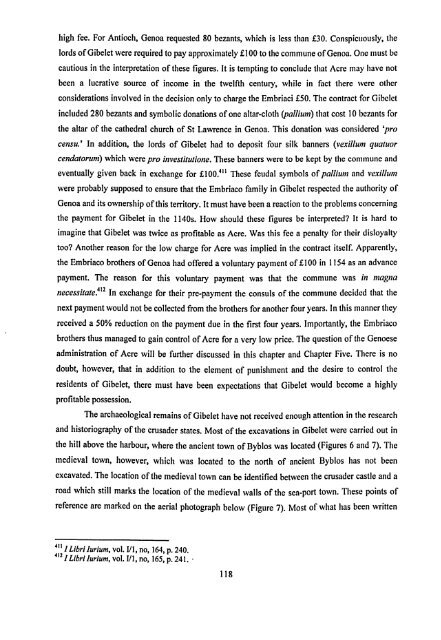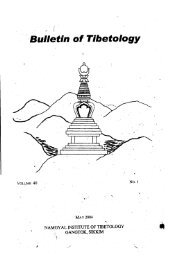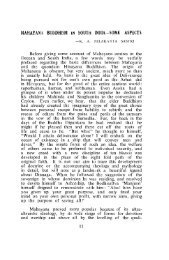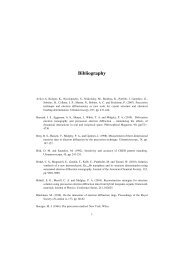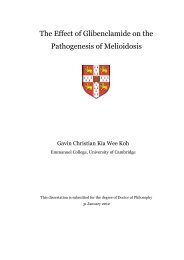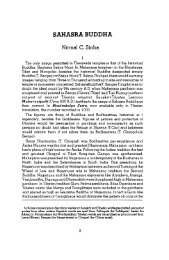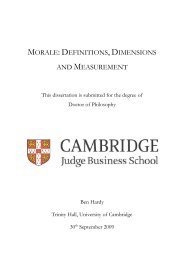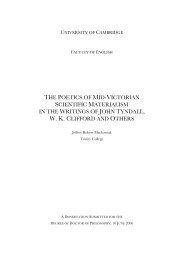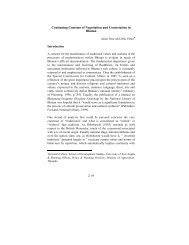The Crusades, the Genoese and the Latin East - DSpace at ...
The Crusades, the Genoese and the Latin East - DSpace at ...
The Crusades, the Genoese and the Latin East - DSpace at ...
You also want an ePaper? Increase the reach of your titles
YUMPU automatically turns print PDFs into web optimized ePapers that Google loves.
high fee. For Antioch, Genoa requested 80 bezants, which is less than £30. Conspicuously, <strong>the</strong><br />
lords of Gibelet were required to pay approxim<strong>at</strong>ely £100 to <strong>the</strong> commune of Genoa. One must be<br />
cautious in <strong>the</strong> interpret<strong>at</strong>ion of <strong>the</strong>se figures. It is tempting to conclude th<strong>at</strong> Acre may have not<br />
been a lucr<strong>at</strong>ive source of income in <strong>the</strong> twelfth century, while in fact <strong>the</strong>re were o<strong>the</strong>r<br />
consider<strong>at</strong>ions involved in <strong>the</strong> decision only to charge <strong>the</strong> Embriaci £50. <strong>The</strong> contract for Gibelet<br />
included 280 bezants <strong>and</strong> symbolic don<strong>at</strong>ions of one altar-cloth (pallium) th<strong>at</strong> cost 10 bezants for<br />
<strong>the</strong> altar of <strong>the</strong> ca<strong>the</strong>dral church of St Lawrence in Genoa. This don<strong>at</strong>ion was considered `pro<br />
censu. ' In addition, <strong>the</strong> lords of Gibelet had to deposit four silk banners (vexillum qu<strong>at</strong>uor<br />
cend<strong>at</strong>orum) which were pro investitutione. <strong>The</strong>se banners were to be kept by <strong>the</strong> commune <strong>and</strong><br />
eventually given back in exchange for E100.41 1 <strong>The</strong>se feudal symbols of pallium <strong>and</strong> vexillum<br />
were probably supposed to ensure th<strong>at</strong> <strong>the</strong> Embriaco family in Gibelet respected <strong>the</strong> authority of<br />
Genoa <strong>and</strong> its ownership of this territory. It must have been a reaction to <strong>the</strong> problems concerning<br />
<strong>the</strong> payment for Gibelet in <strong>the</strong> 1140s. How should <strong>the</strong>se figures be interpreted? It is hard to<br />
imagine th<strong>at</strong> Gibelet was twice as profitable as Acre. Was this fee a penalty for <strong>the</strong>ir disloyalty<br />
too? Ano<strong>the</strong>r reason for <strong>the</strong> low charge for Acre was implied in <strong>the</strong> contract<br />
itself. Apparently,<br />
<strong>the</strong> Embriaco bro<strong>the</strong>rs of Genoa had offered a voluntary payment of £100 in 1154 as an advance<br />
payment. <strong>The</strong> reason for this voluntary payment was th<strong>at</strong> <strong>the</strong> commune was in magna<br />
necessit<strong>at</strong>e. 412 In exchange for <strong>the</strong>ir pre-payment <strong>the</strong> consuls of <strong>the</strong> commune decided th<strong>at</strong> <strong>the</strong><br />
next payment would not be collected from <strong>the</strong> bro<strong>the</strong>rs for ano<strong>the</strong>r four years. In this manner <strong>the</strong>y<br />
received a 50% reduction on <strong>the</strong> payment due in <strong>the</strong> first four years. Importantly, <strong>the</strong> Embriaco<br />
bro<strong>the</strong>rs thus managed to gain control of Acre for a very low price. <strong>The</strong> question of <strong>the</strong> <strong>Genoese</strong><br />
administr<strong>at</strong>ion of Acre will be fur<strong>the</strong>r discussed in this chapter <strong>and</strong> Chapter Five. <strong>The</strong>re is no<br />
doubt, however, th<strong>at</strong> in addition to <strong>the</strong> element of punishment <strong>and</strong> <strong>the</strong> desire to control <strong>the</strong><br />
residents of Gibelet, <strong>the</strong>re must have been expect<strong>at</strong>ions th<strong>at</strong> Gibelet would become a highly<br />
profitable possession.<br />
<strong>The</strong> archaeological remains of Gibelet have not received enough <strong>at</strong>tention in <strong>the</strong> research<br />
<strong>and</strong> historiography of <strong>the</strong> crusader st<strong>at</strong>es. Most of <strong>the</strong> excav<strong>at</strong>ions in Gibelet were carried out in<br />
<strong>the</strong> hill above <strong>the</strong> harbour, where <strong>the</strong> ancient town of Byblos was loc<strong>at</strong>ed (Figures 6 <strong>and</strong> 7). <strong>The</strong><br />
medieval town, however, which was loc<strong>at</strong>ed to <strong>the</strong> north of ancient Byblos has not been<br />
excav<strong>at</strong>ed. <strong>The</strong> loc<strong>at</strong>ion of <strong>the</strong> medieval town can be identified between <strong>the</strong> crusader castle <strong>and</strong> a<br />
road which still marks <strong>the</strong> loc<strong>at</strong>ion of <strong>the</strong> medieval walls of <strong>the</strong> sea-port town. <strong>The</strong>se points of<br />
reference are marked on <strong>the</strong> aerial photograph below (Figure 7). Most of wh<strong>at</strong> has been written<br />
4111<br />
Libri lurium, vol. 1/1, no, 164, p. 240.<br />
4121<br />
Libri lurium, vol. 1/1, no, 165, p. 241.<br />
118


